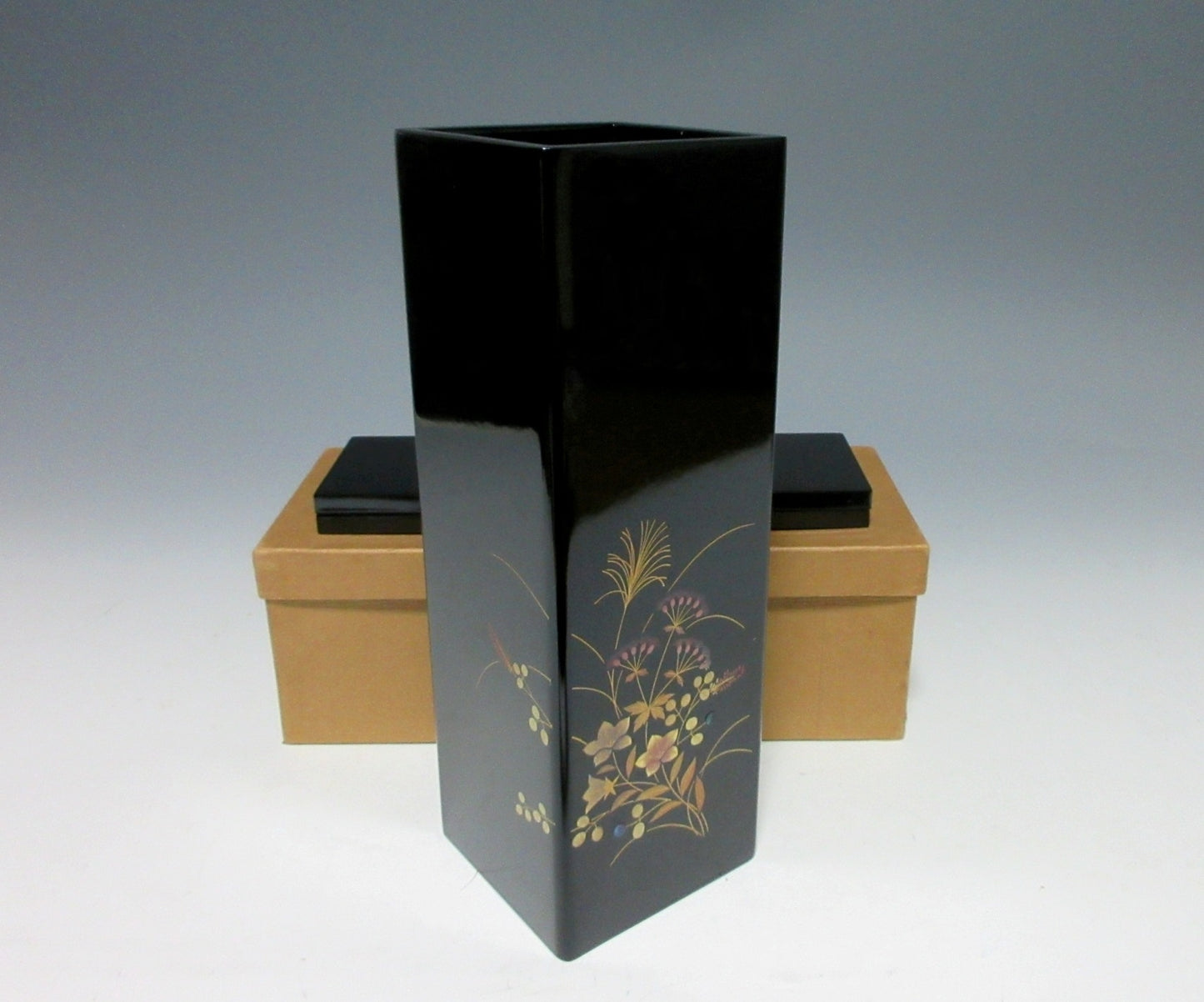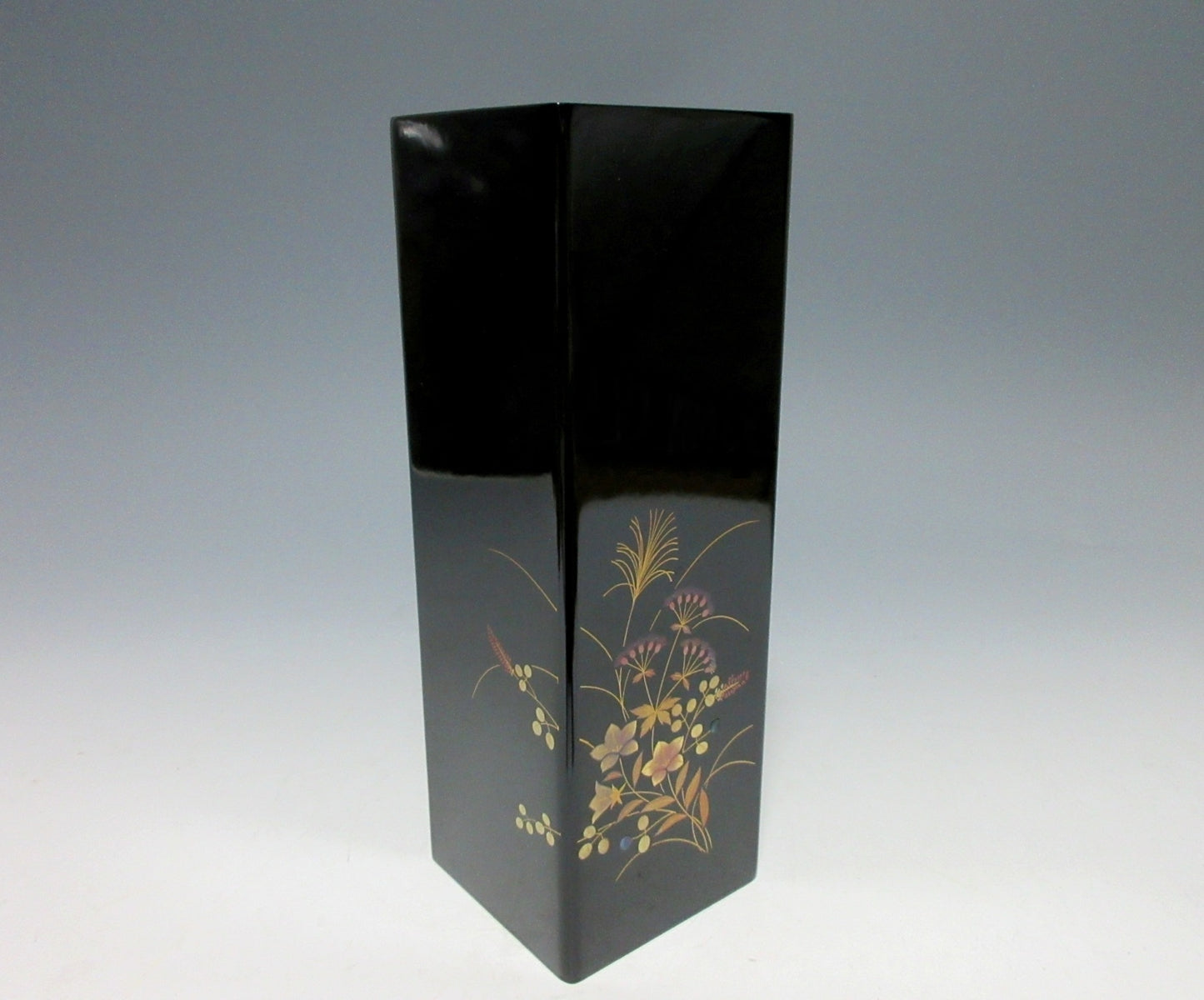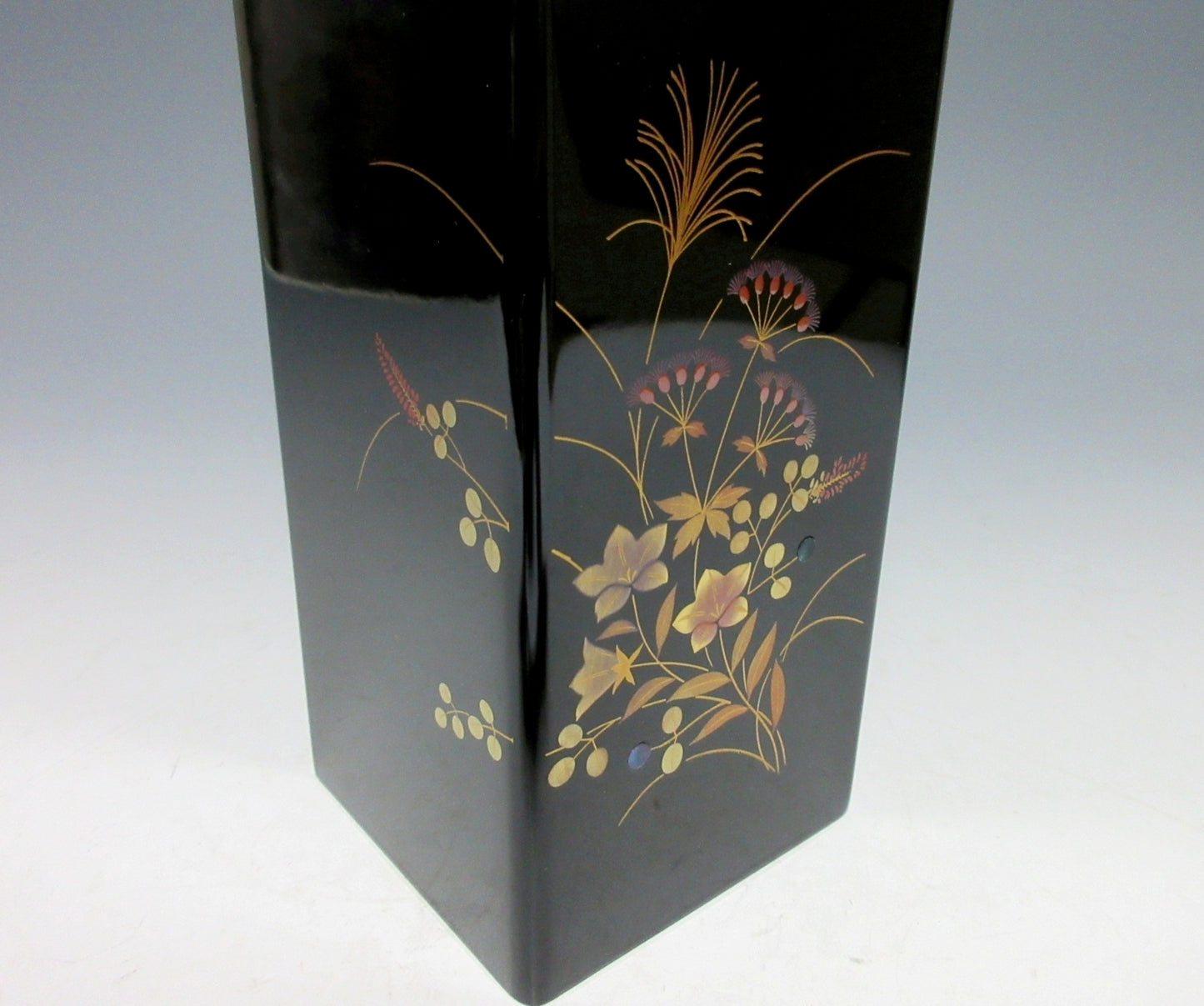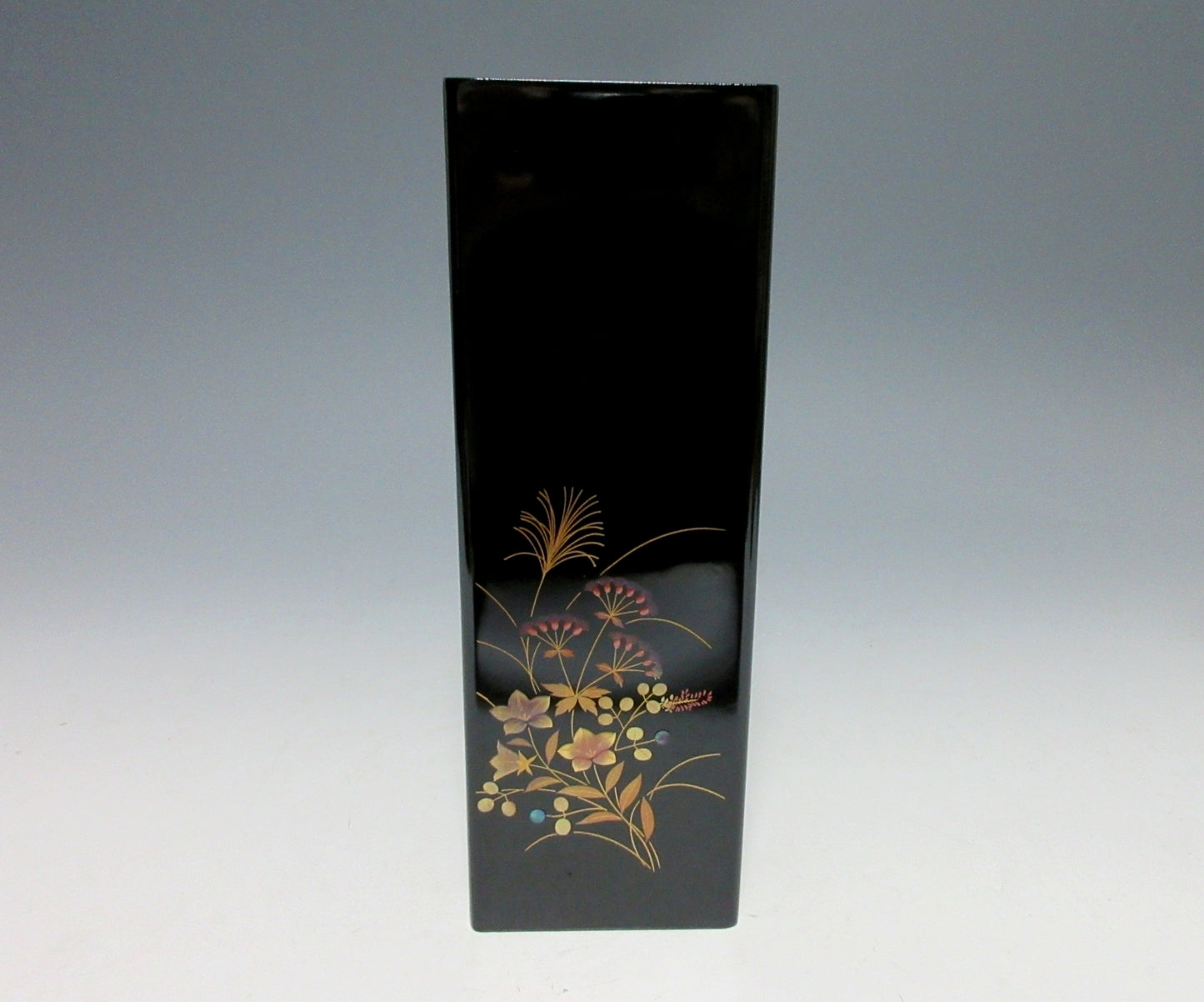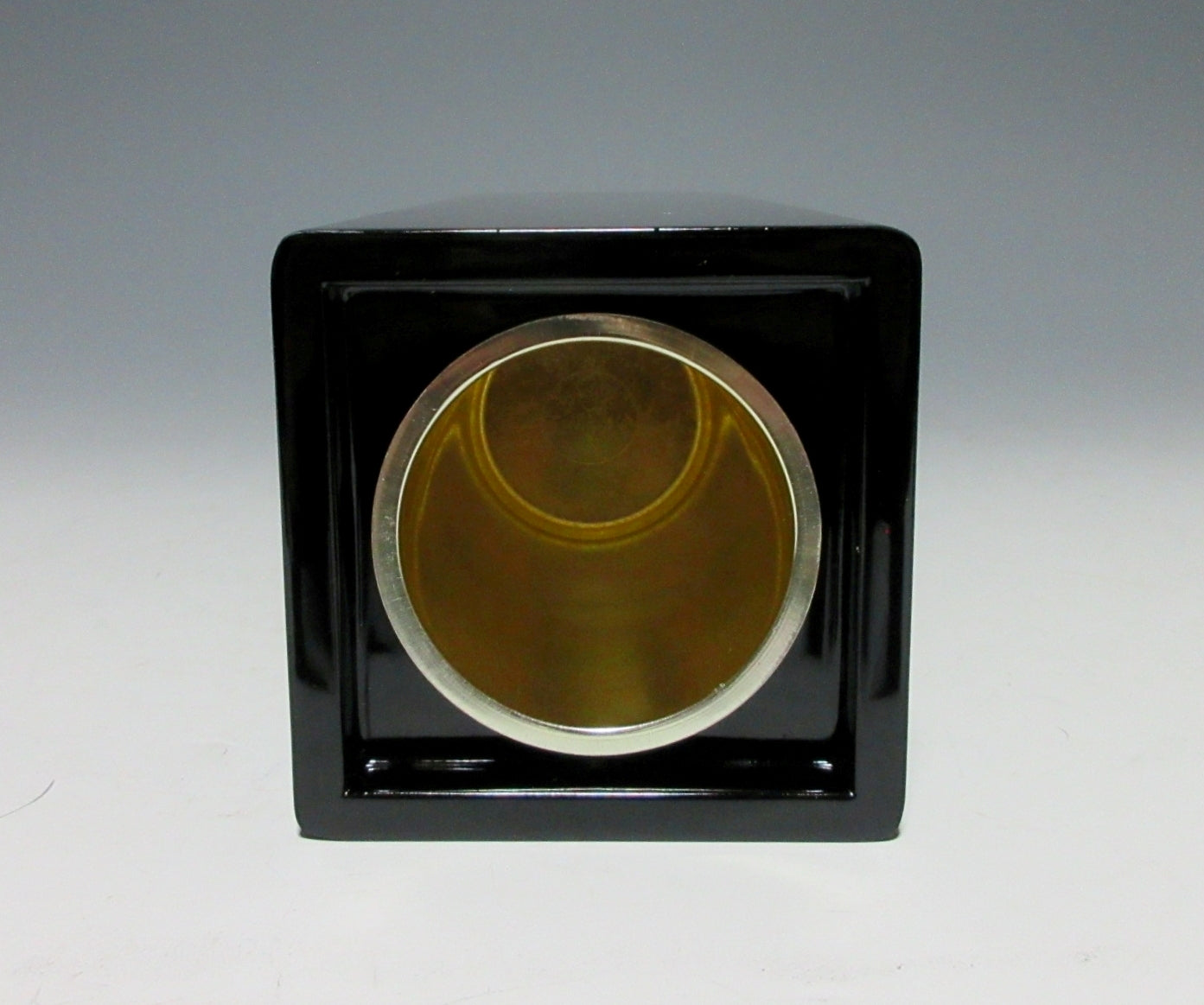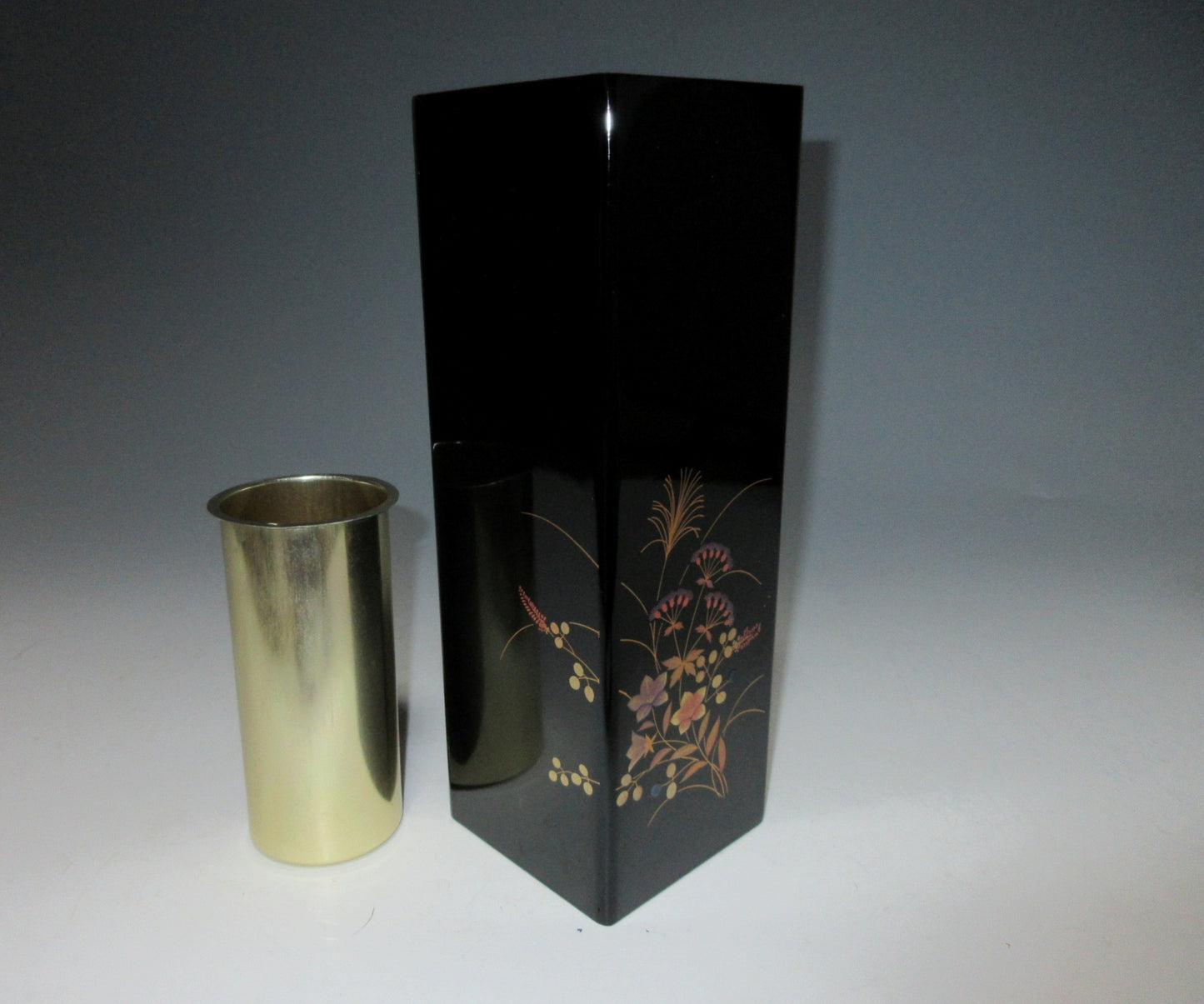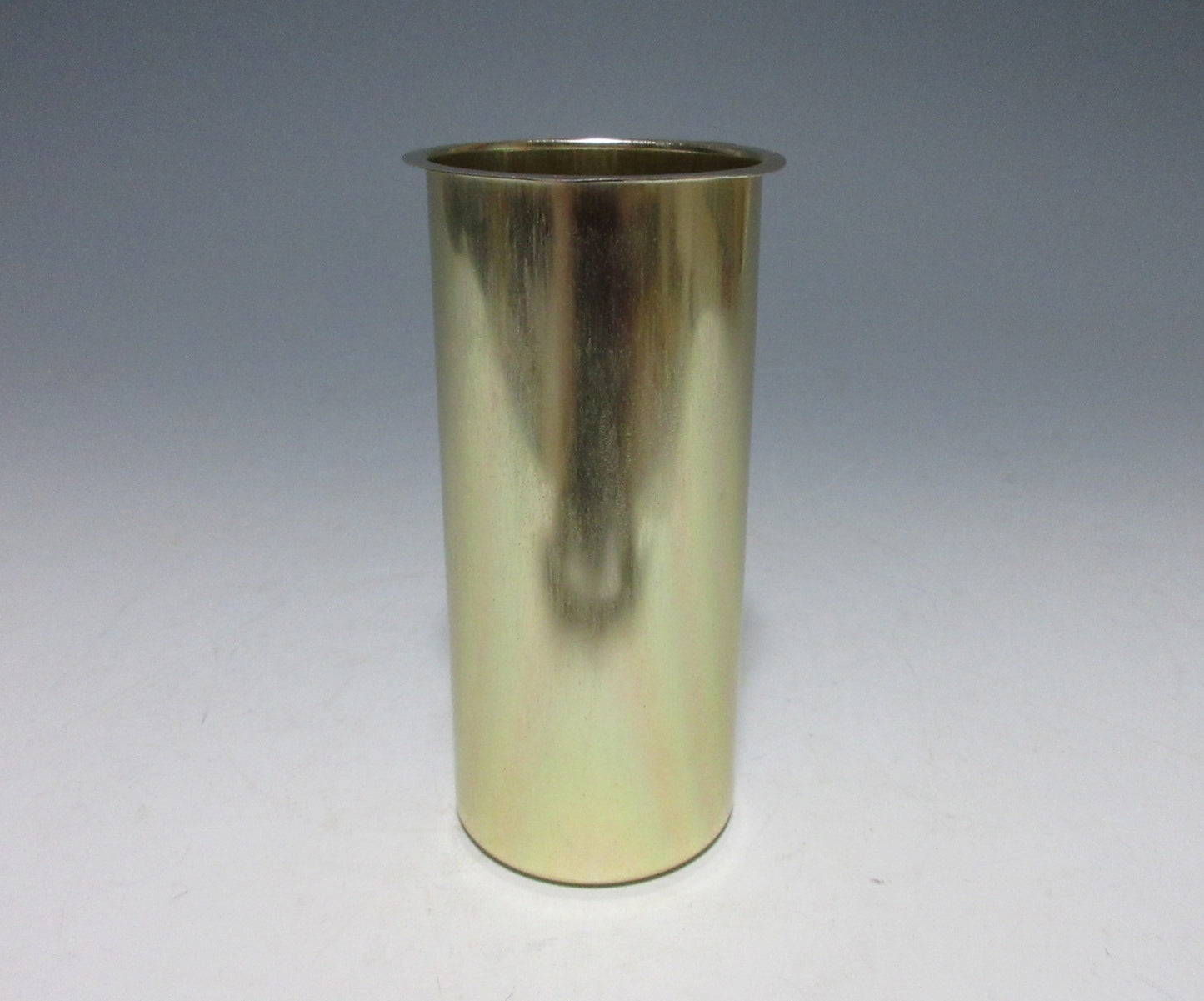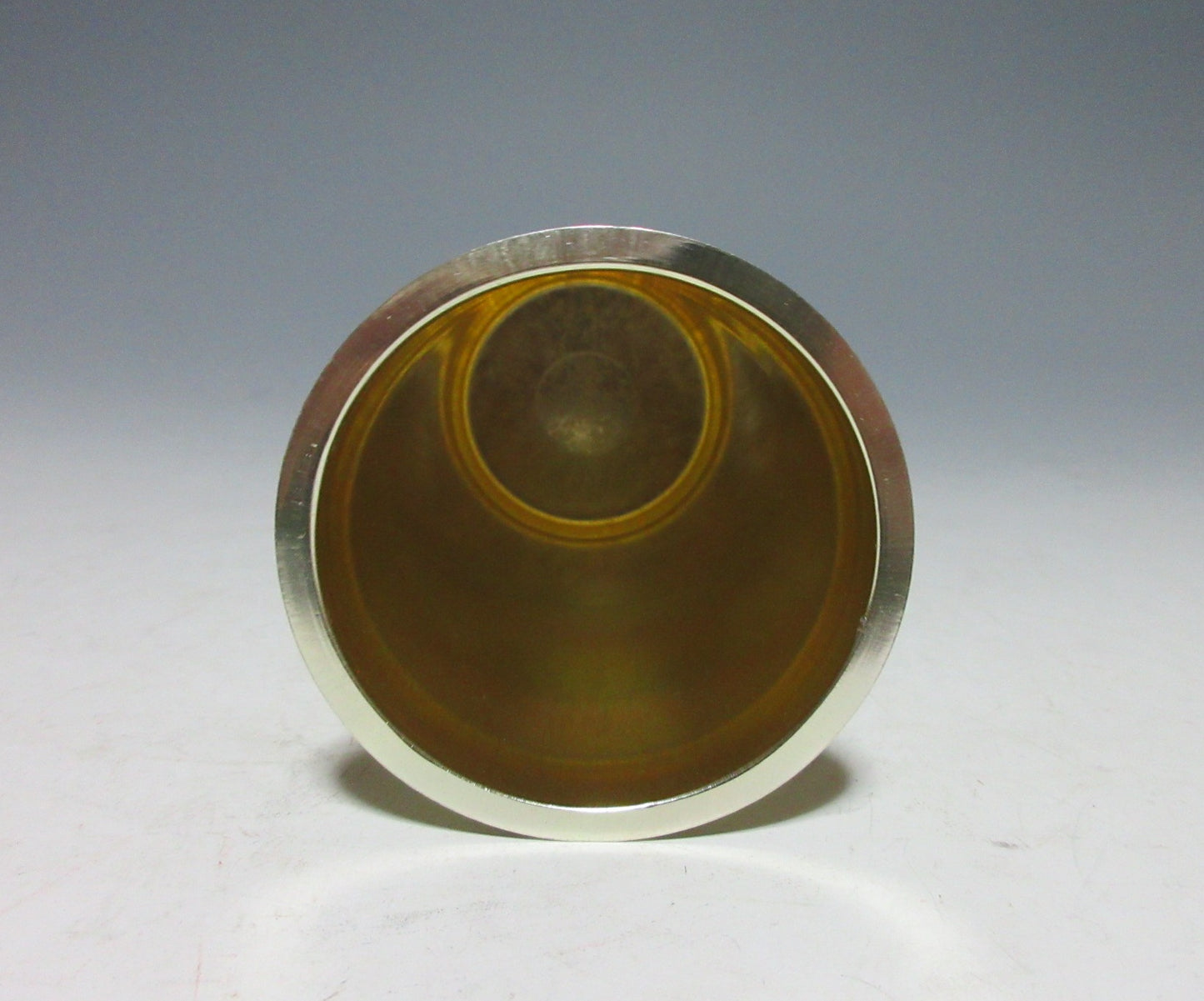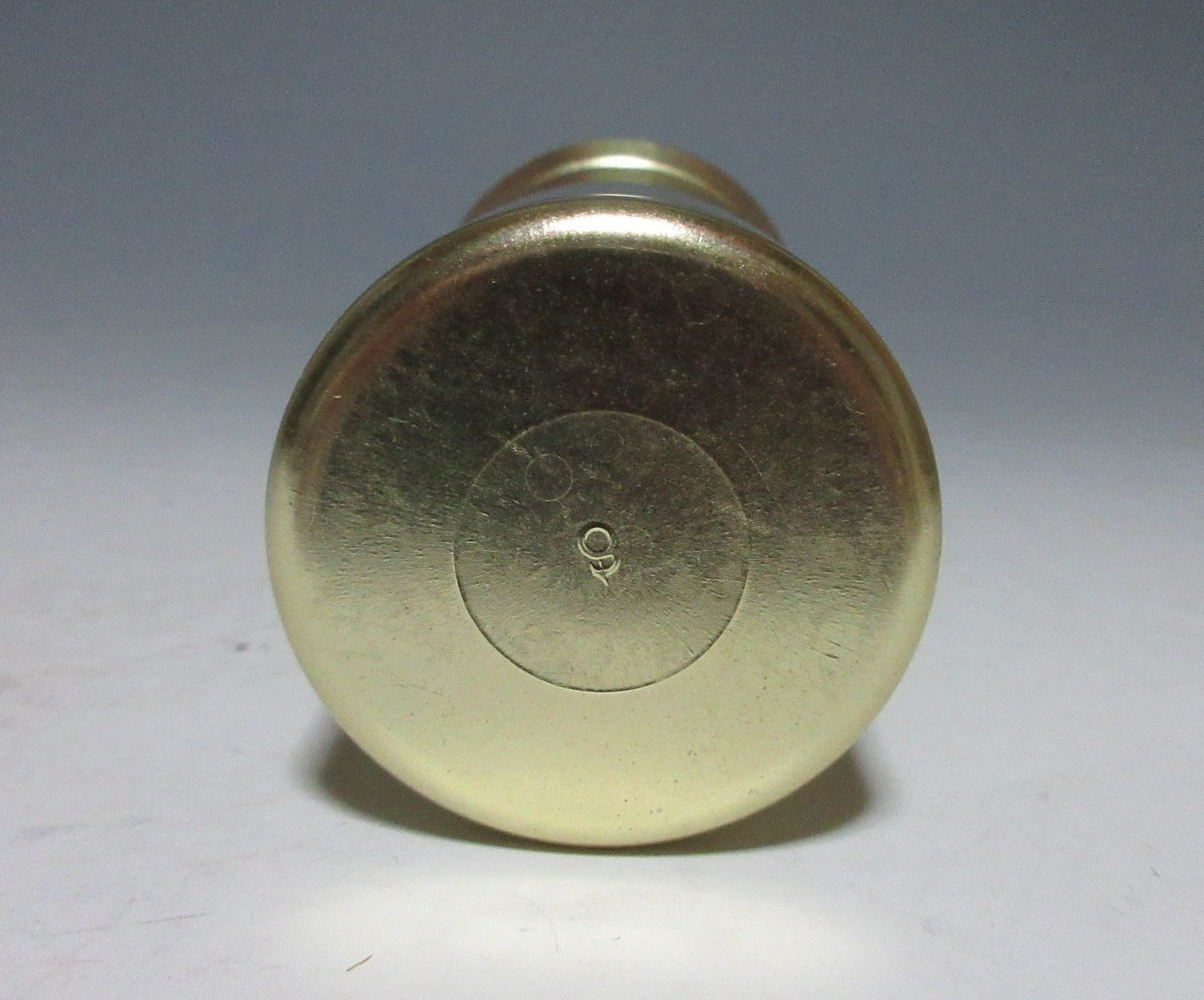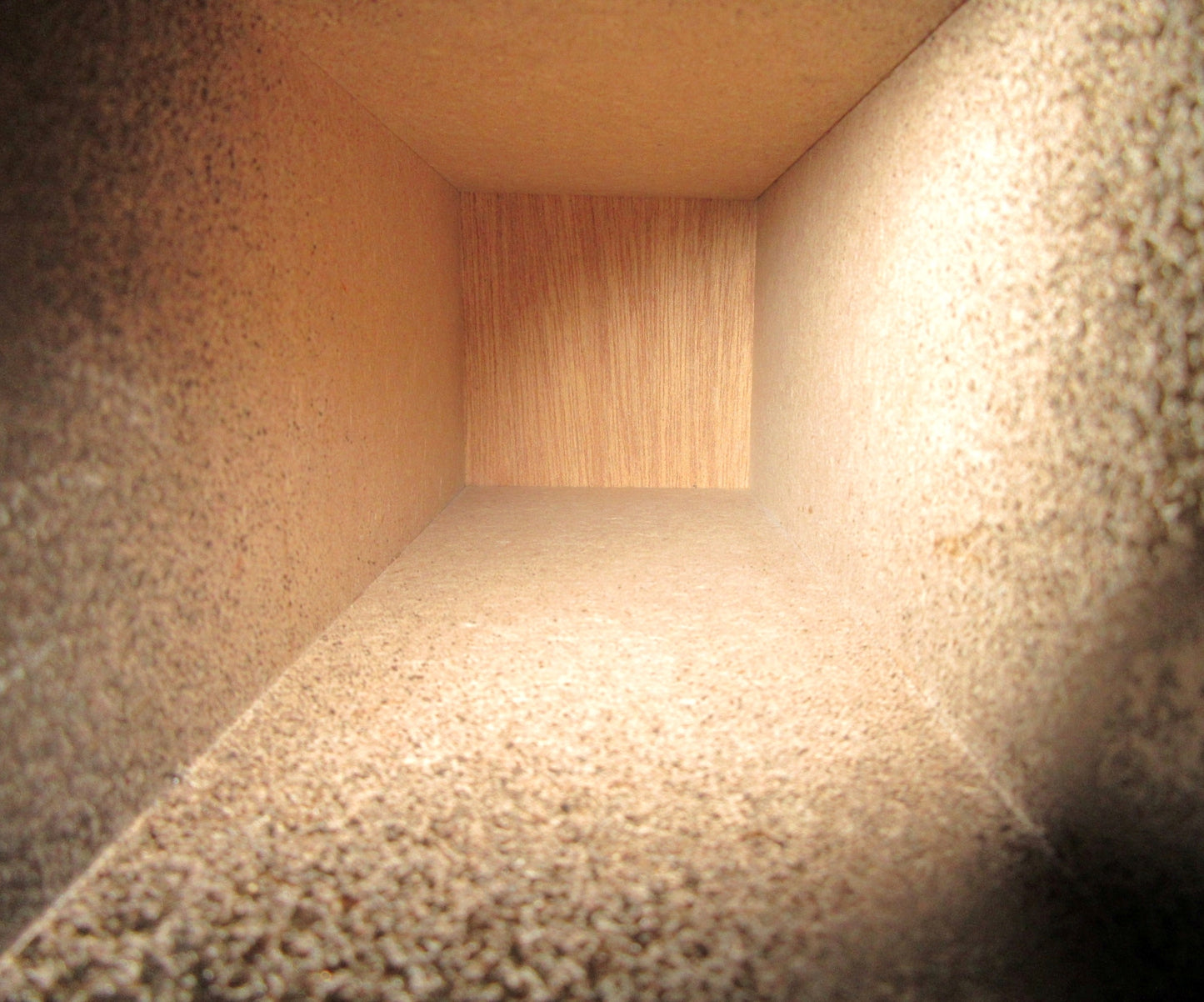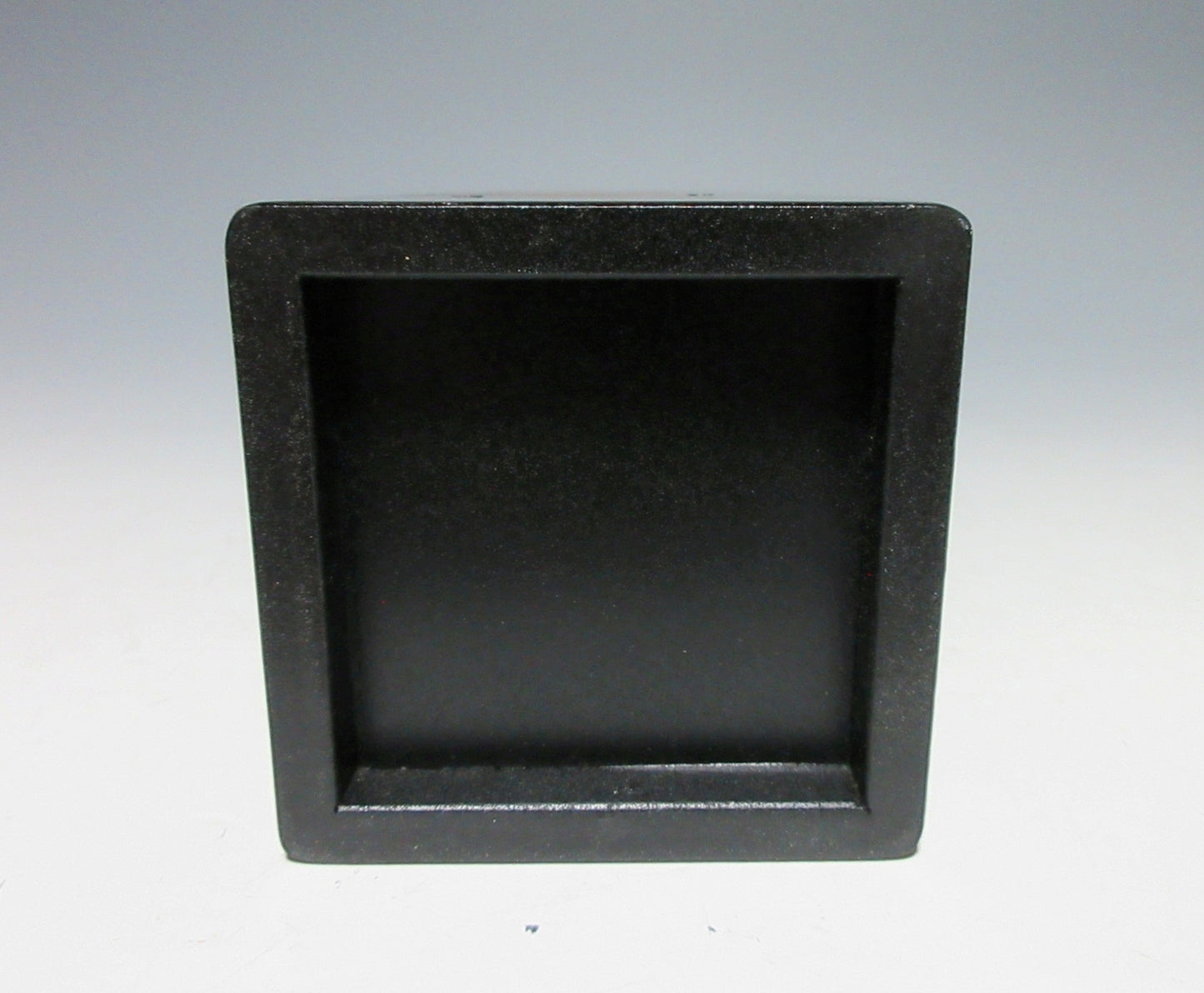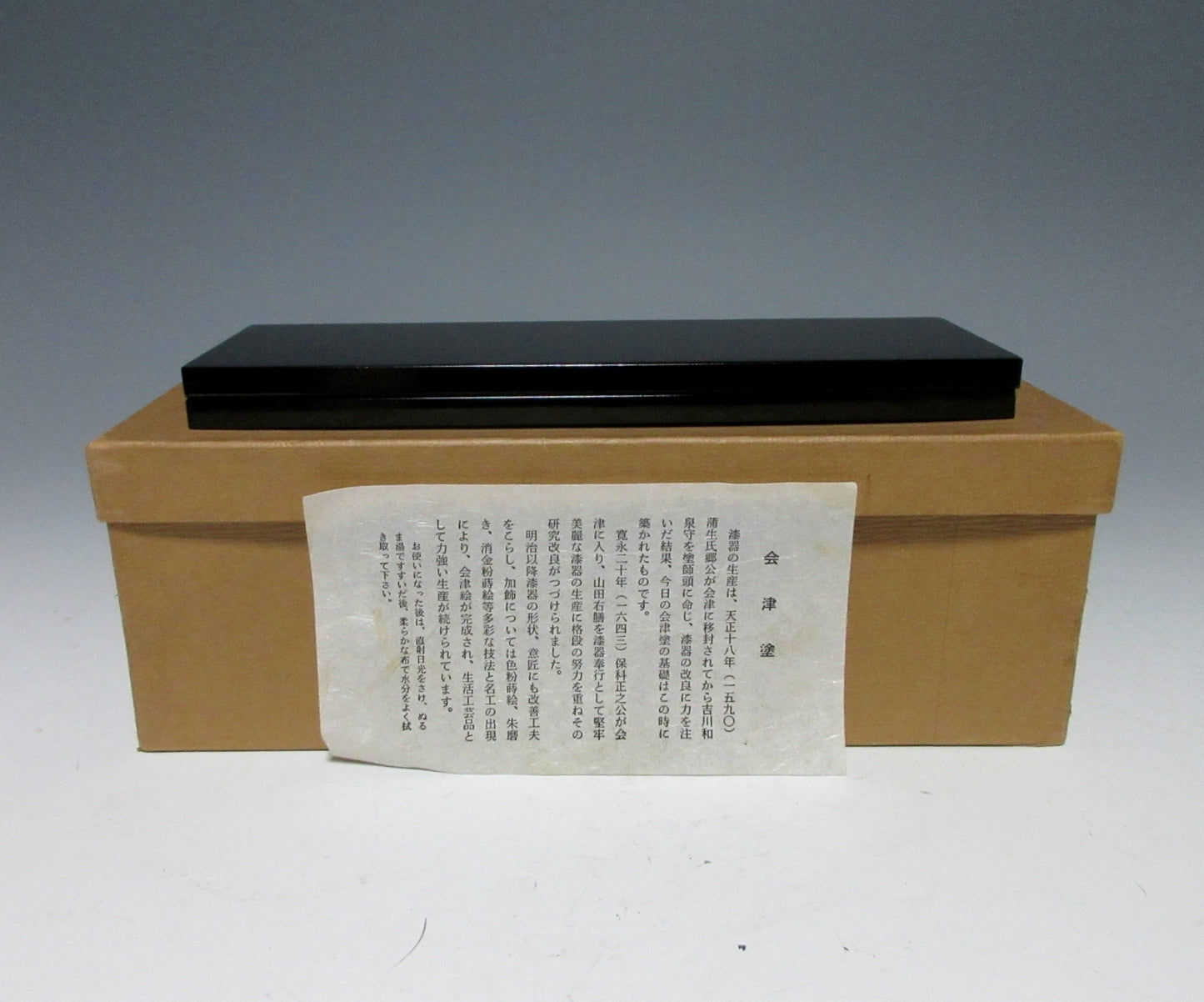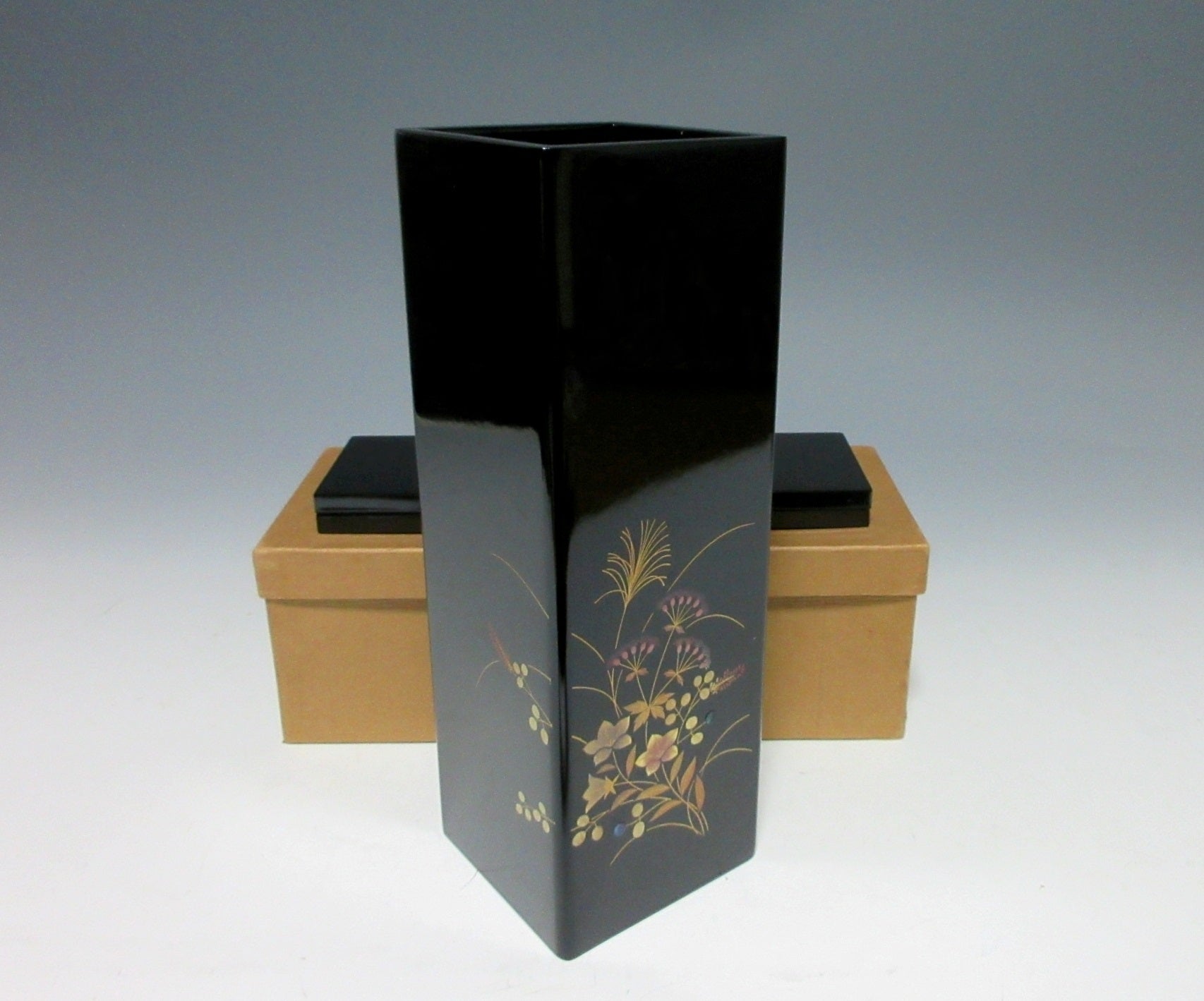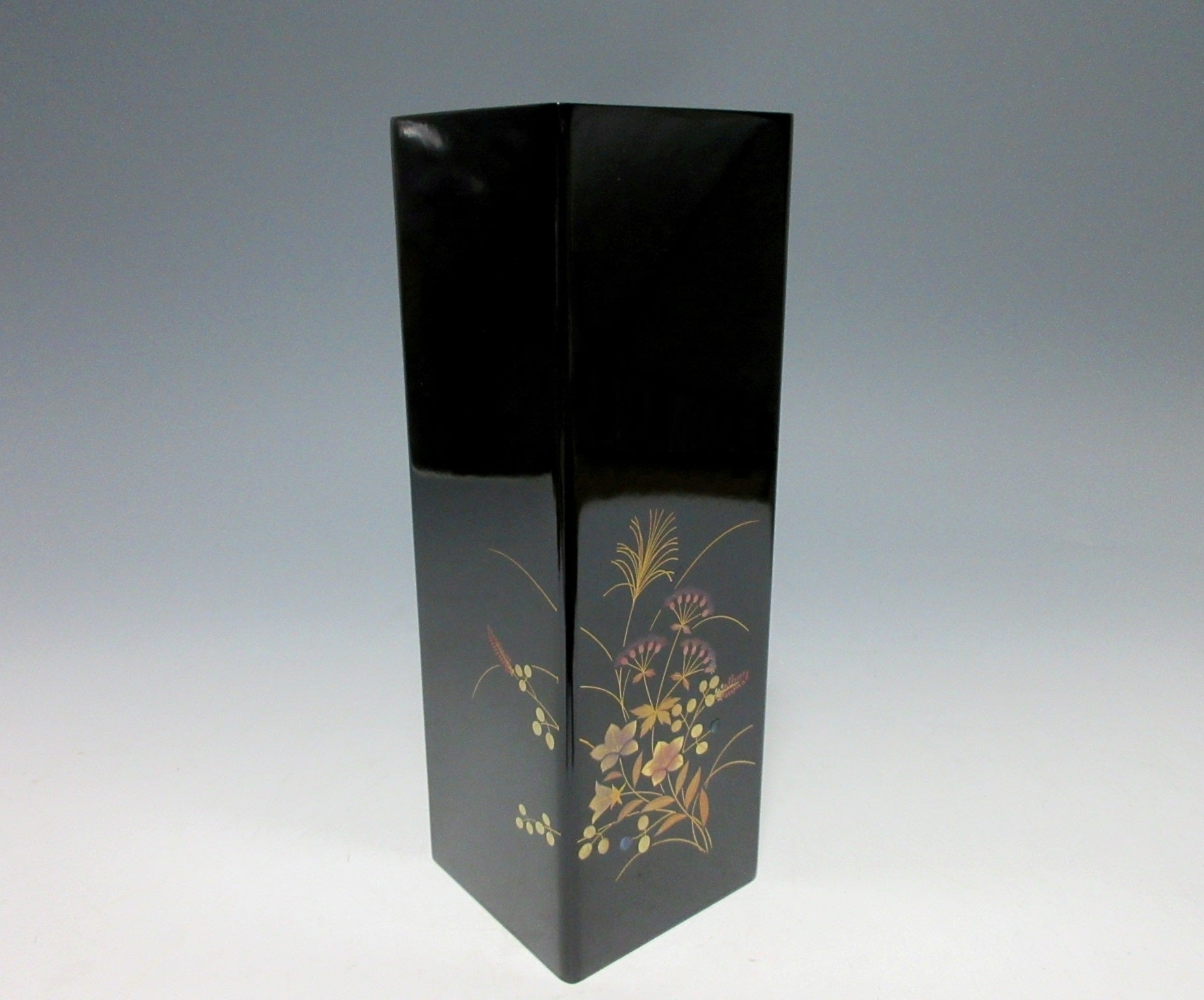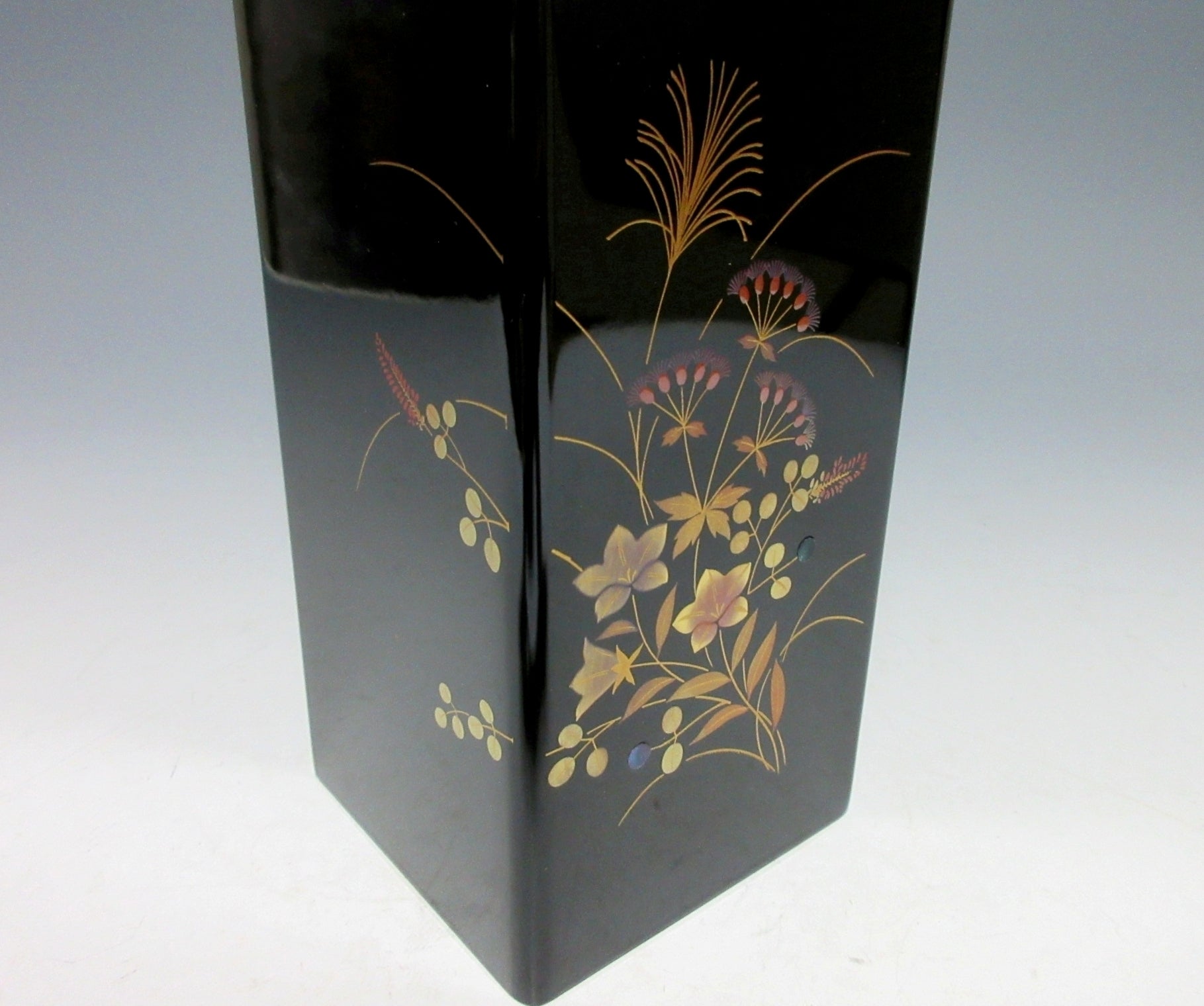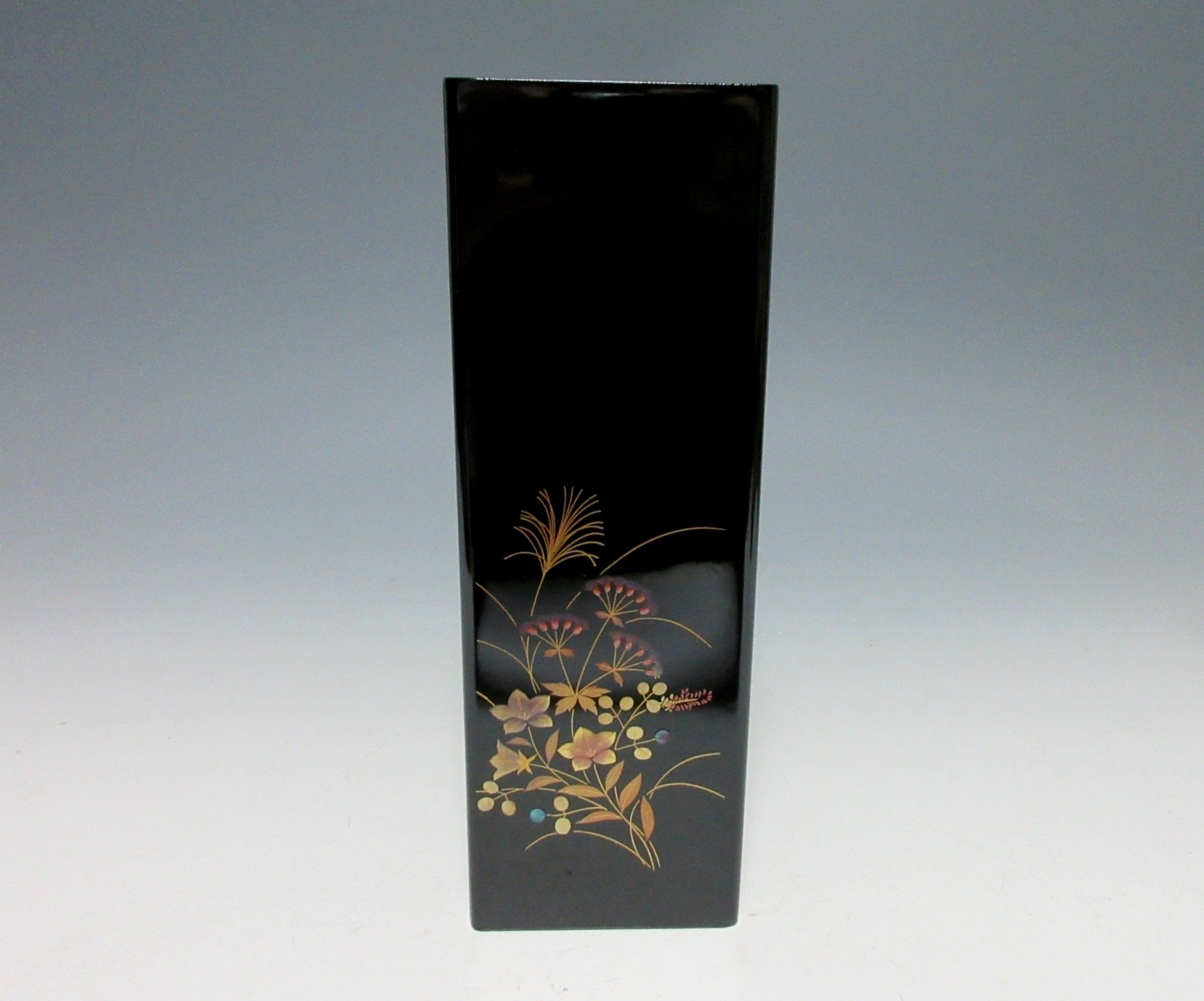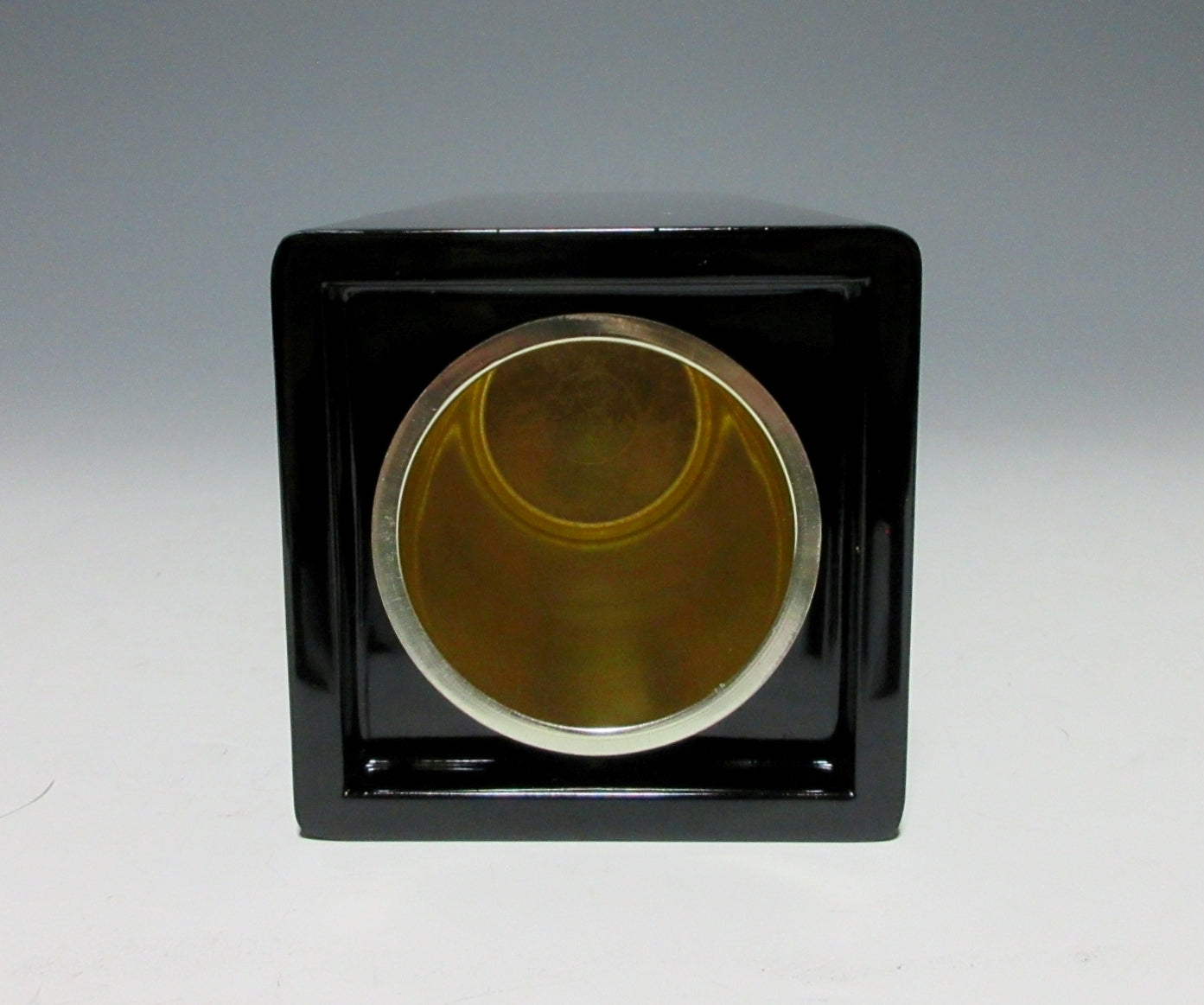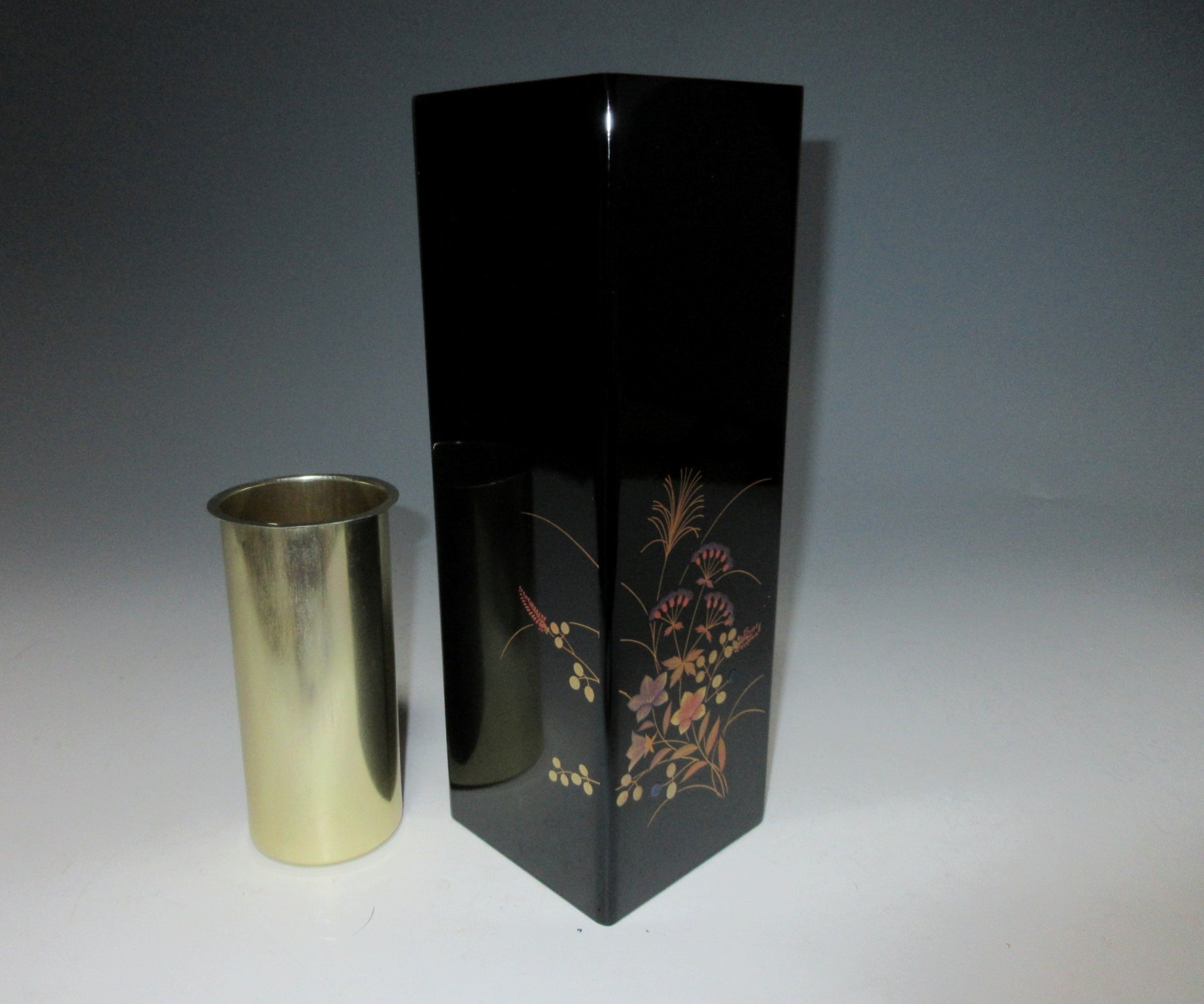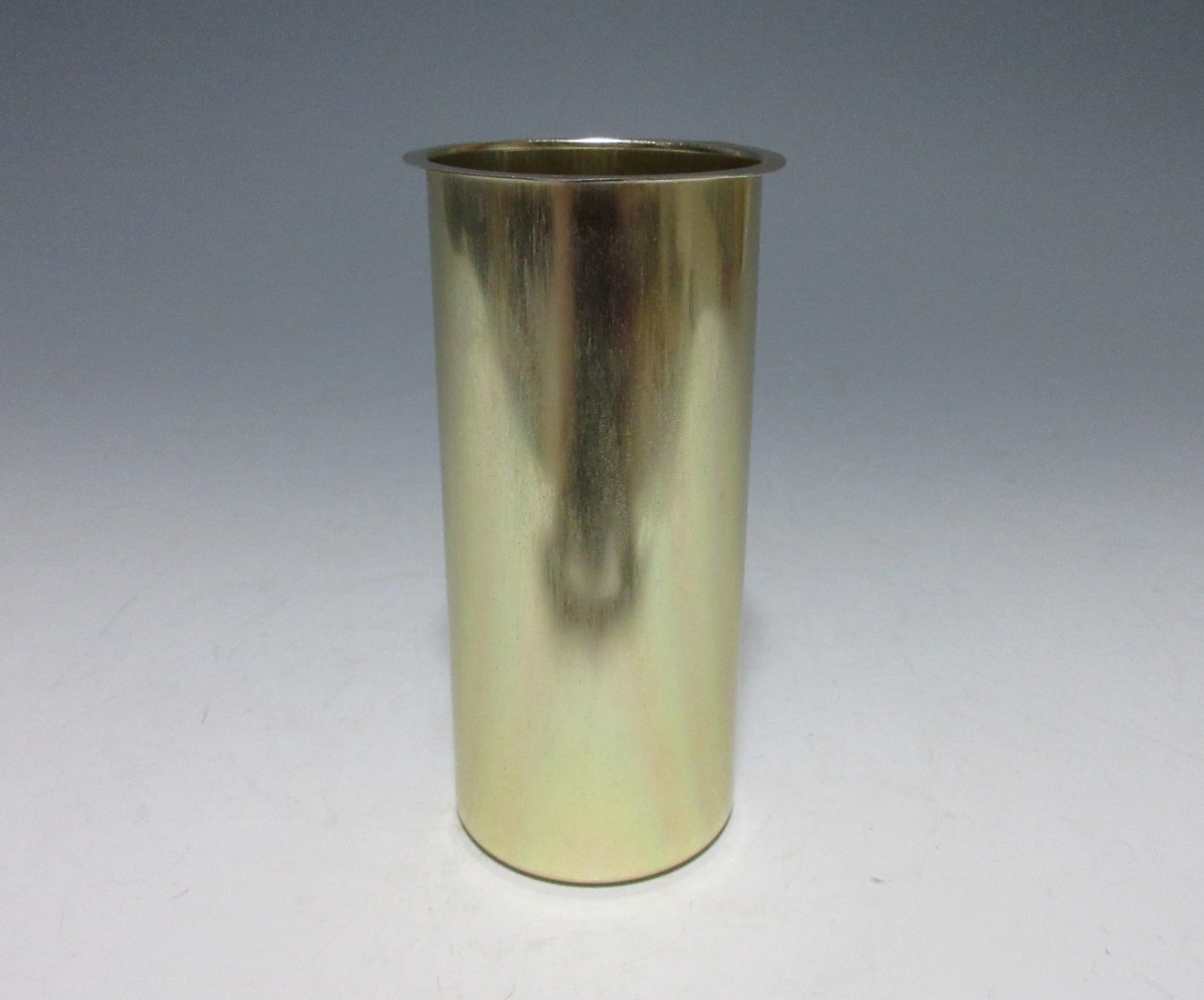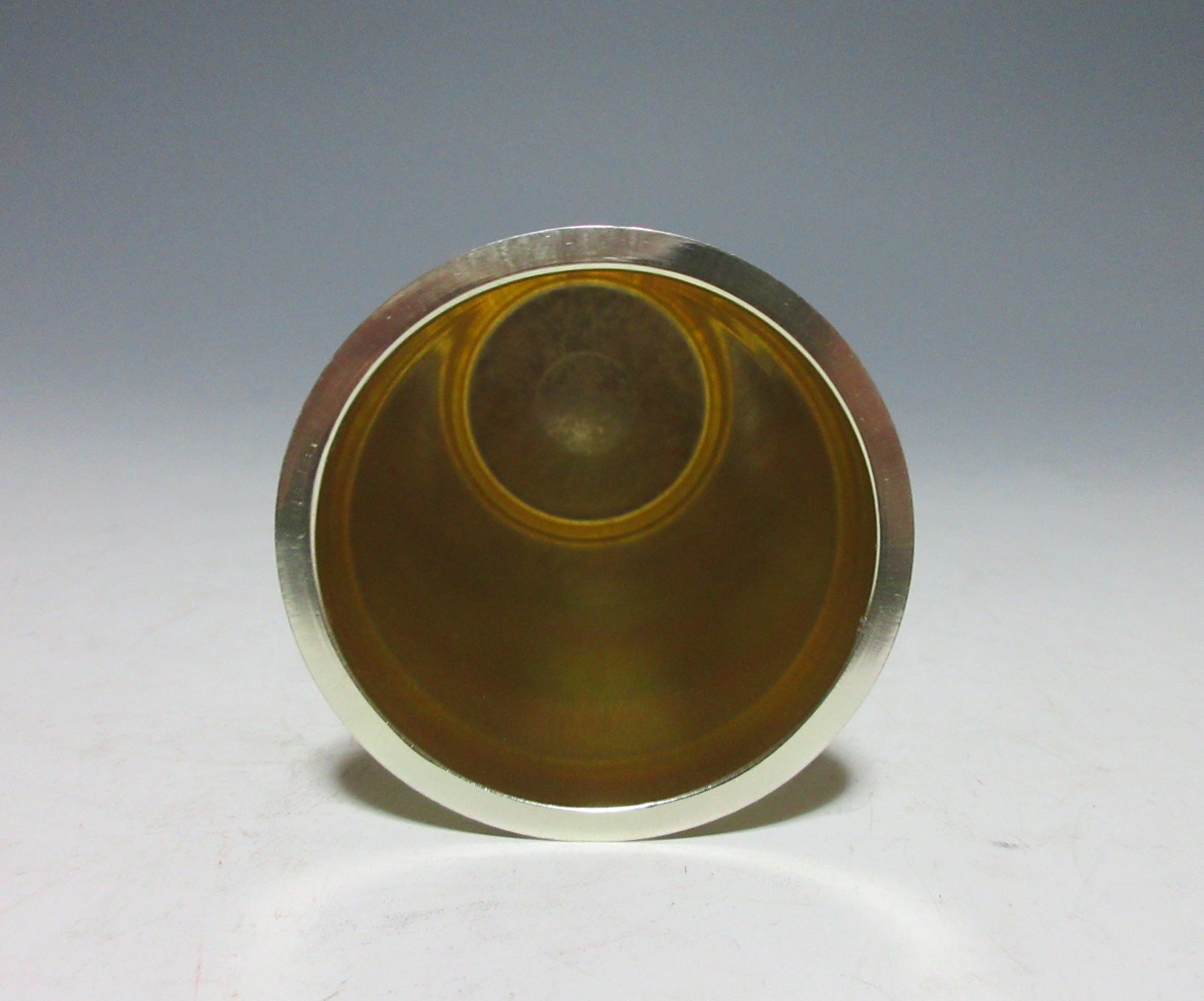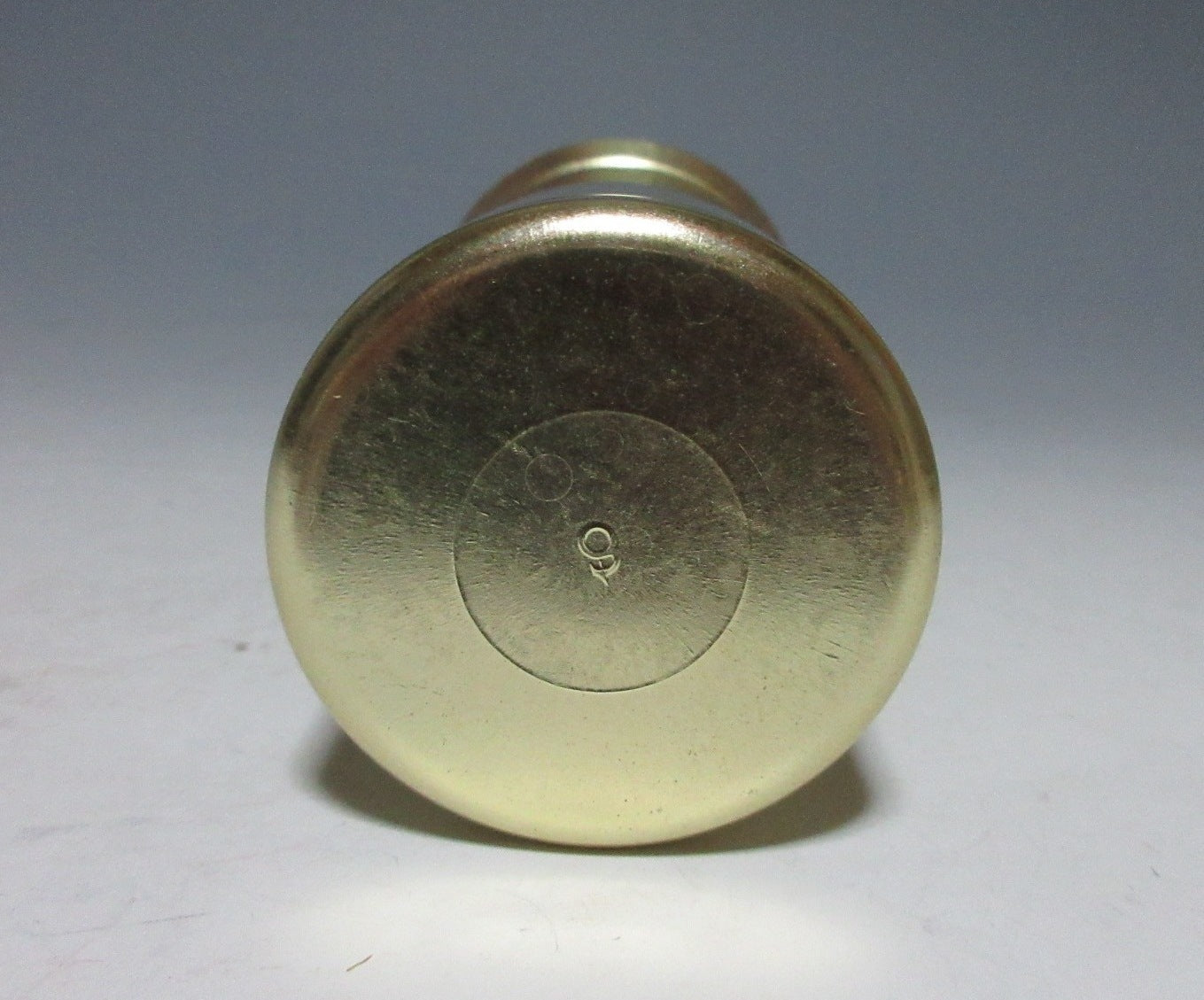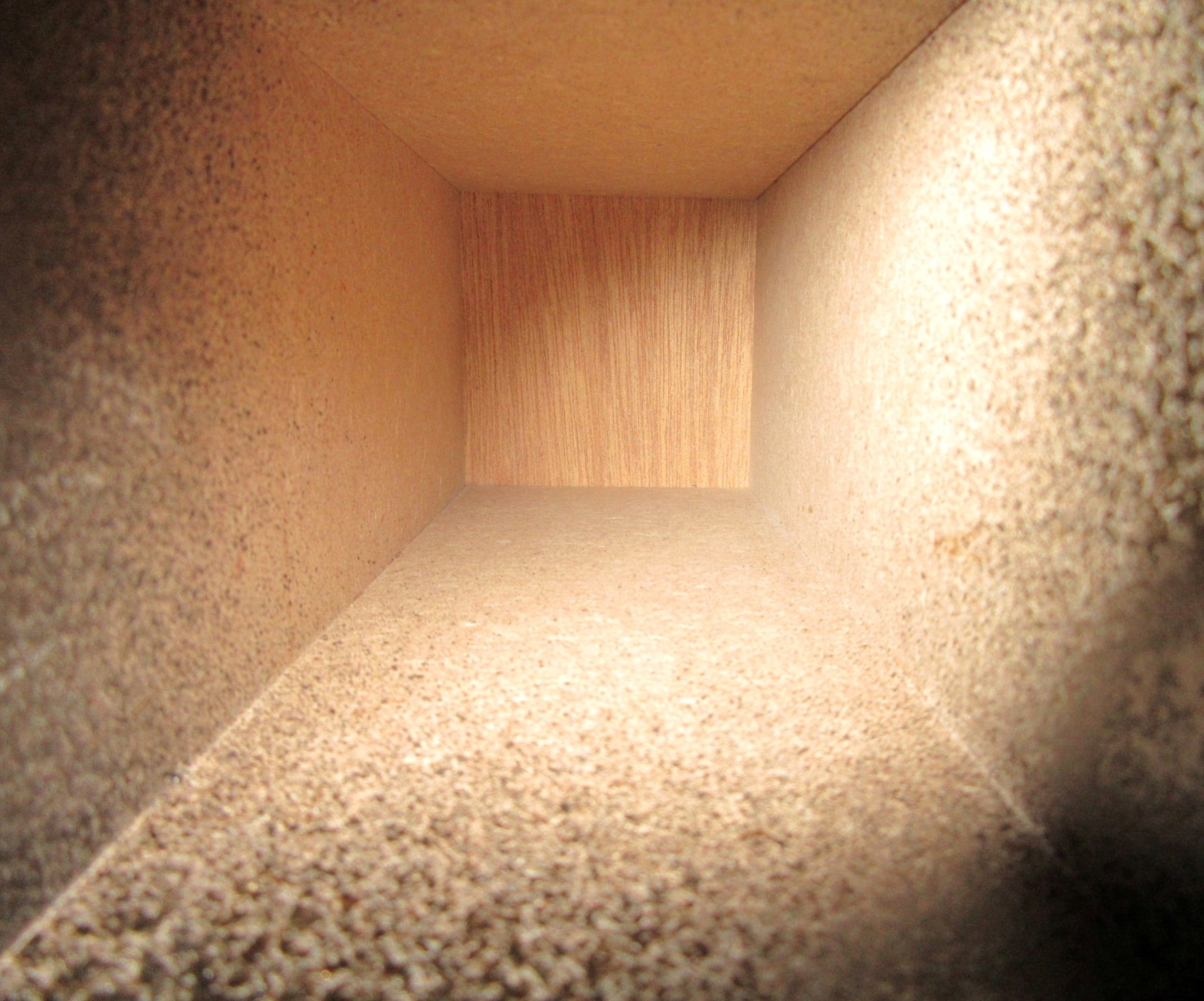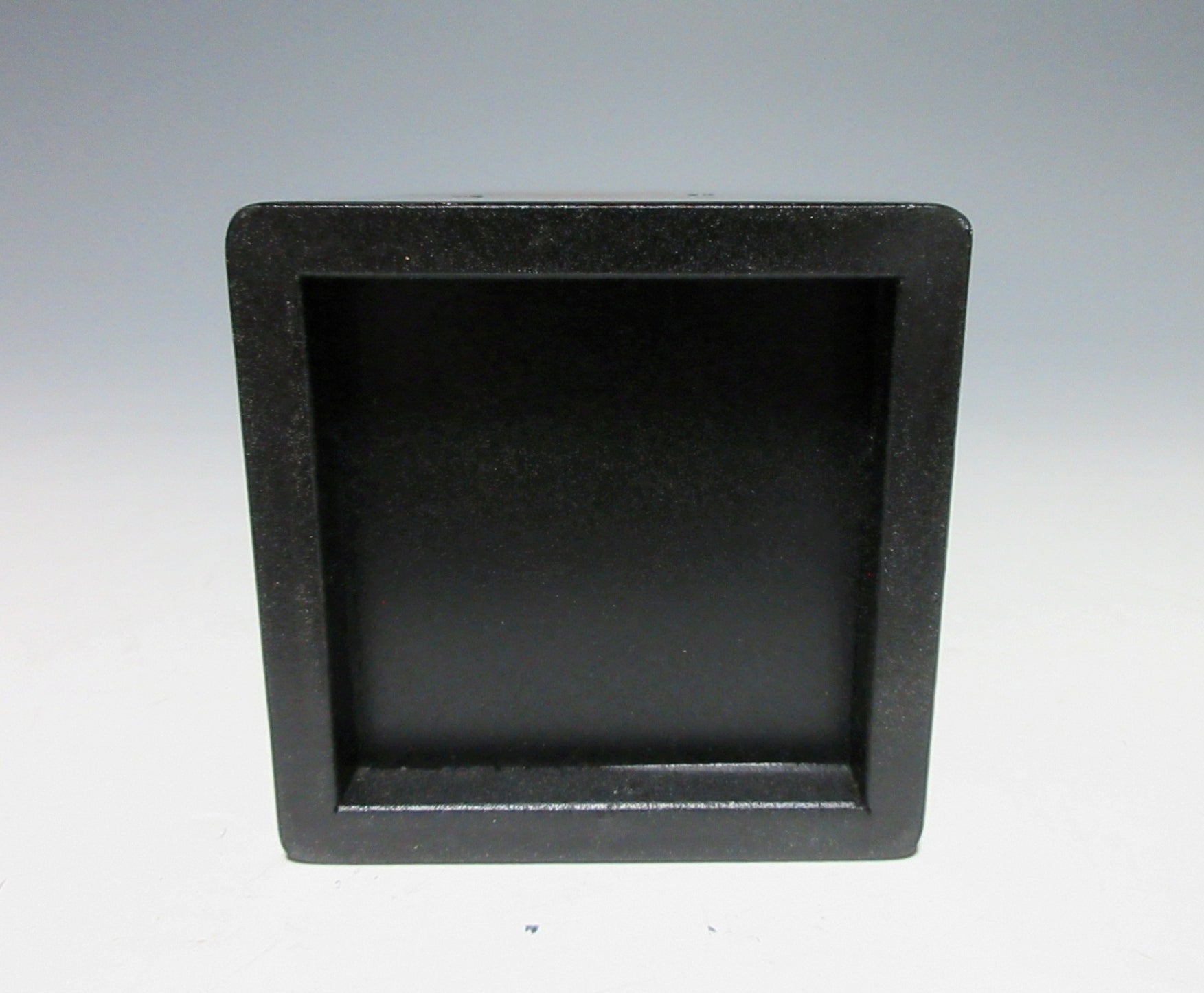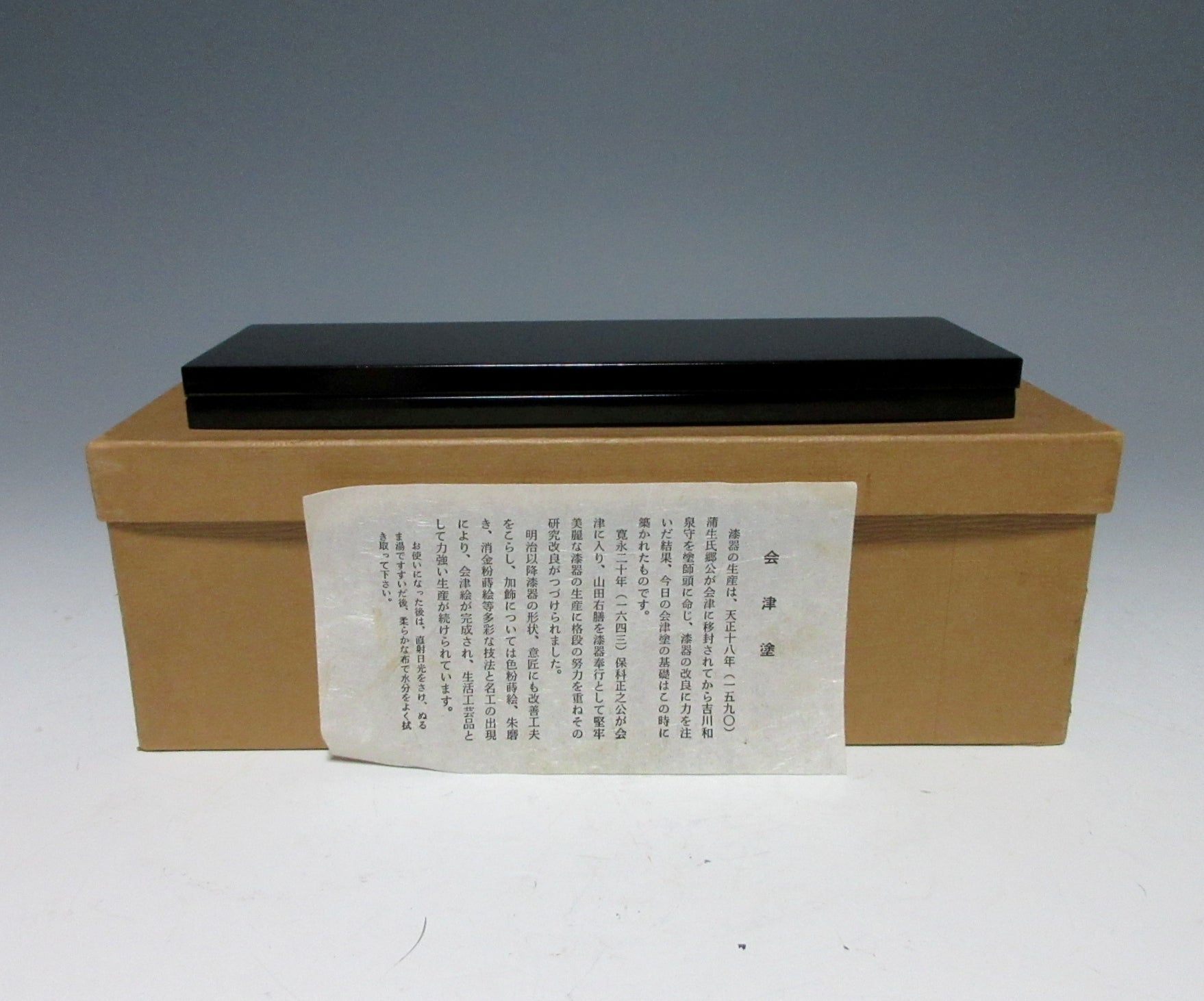Kominka Zakka
Aizu-nuri Autumn Akikusa Vase
Aizu-nuri Autumn Akikusa Vase
Couldn't load pickup availability
*SHIPPING OPTIONS VARY DEPENDING ON THE DESTINATION, PLEASE SCROLL TO THE END OF THIS LISTING FOR MORE DETAILS.
This listing is for an Aizu-nuri makie vase made around 30 years ago. The interior consists of a wood base with wood composite walls, whilst the exterior is made of synthetic resin coated in lacquer. The front is decorated with a splendid depiction of the seven flowers of autumn. The seven official flowers are bush clover, pampas grass, kudzu, dianthus, golden lace, hemp agrimony, and the Japanese bellflower. These seasonal favourites have been popular since the latter half of the eighth century after a collection of waka poems known as Manyo-shu were compiled by a waka poet named Yamanoue-no-Okura. The vase comes with a gold plastic insert on the interior, as well as two display boards. It also comes with its original paper storage box, as well as a Japanese profile paper about Aizu lacquerware.
Aizu lacquerware dates back to 1590 in the area around Aizu, which lies in the middle of Fukushima Prefecture. It took on its modern form after various craftsmen from Kyoto introduced makie gold dust application and other decorative techniques. Specifically this type of lacquerware is the result of a highly efficient method involving a fine division of labour, one that allows volume production whilst maintaining original handcrafting techniques. Specialist craft workers perform separate tasks such as wood forming and lacquering, each contributing a high level of skill that leads to the creation of finished items of superior quality. Aizu lacquerware became well known after being exported to China and the Netherlands from the port of Nagasaki. Aizu is now one of the centres of lacquerware production in Japan, with many different types of products from tableware, flower vases, writing materials, tea sets and Buddhist altar fittings.
Makie refers to a crafting technique in Japan from presumably the Nara period. Craftsmen sprinkle gold or silver metal powder over successive layers of lacquer before it dries. Traditionally pure gold powder, pure gold flakes, and pure silver powder were used to complete motifs on lacquerware. The process of applying gold or silver powder requires both time and skill. At first the craftsman sketches out the design. He or she then adds charcoal powder to the base of the relief, and then a layer of urushi lacquer. Gold or silver powder is sprinkled over the wet lacquer, which acts as an adhesive. The surface is polished and then the process is repeated over and over until a beautiful raised pattern appears.
Sizes
Paper Box: H.9.8cm (3.8”) x 28.7cm (11.2”) x 12.2cm (4.8”)
Vase: H.27cm (10.6”) x 9cm (3.5”) x 9cm (3.5”)
Insert: L.13.6cm (5.3”) x Dia.6.8cm (2.6”)
Condition
It’s in very good condition with only light scuffing here and there, plus some minor wear on the bottom.
THESE ARE SHIPPING ESTIMATES BASED ON THE CURRENT GLOBAL SITUATION
**Germany, France, Greece, Spain, Poland, Austria, Slovakia, Lithuania, Slovenia: NO SHIPPING. Very strict and expensive packaging laws in place and we are not licensed to send products to these countries. We have no plan to register at this time because the process is in some cases very expensive and complicated, plus each country has its own set of regulations and application process.
**USA, UK, Canada, Australia, New Zealand, Switzerland, Norway: Airmail Small Packet (approx. 15-28 days). Combined shipping available up to 2kgs for Airmail Small Packet (please send us a message).
**Asia: Airmail Small Packet (approx. 15-21 days). Combined shipping available up to 2kgs for Airmail Small Packet (please send us a message).
**Central Asia, Middle East, South Africa, Brazil, Mexico: EMS Express 10-15 days.
**Russia: No shipping methods available.
Share
